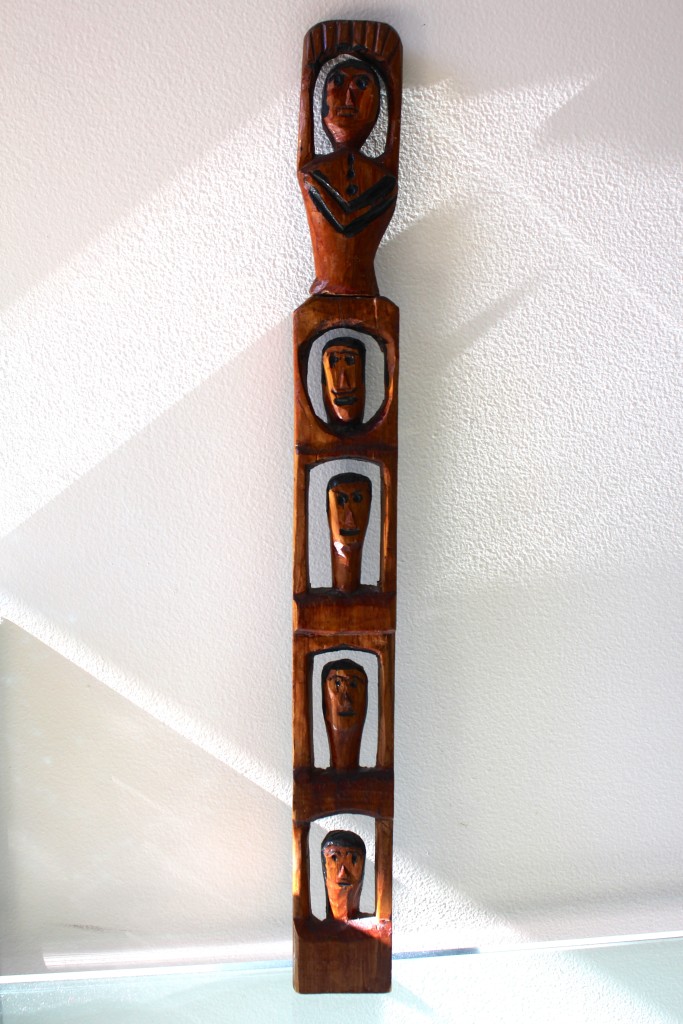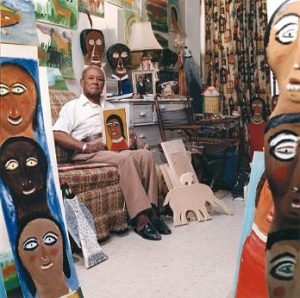Photo from Smithsonian website, Kenneth Burkhart and Russell B. Phillips
Willam R. Dawson, 88, a Chicago “outsider“ artist, was a wood sculptor and painter. He began sculpting after he retired and saw his artwork become part of a national touring exhibit of black folk artists in the early 1980s and the subject of a major retrospective at the Chicago Public Library Cultural Center from Jan. 27 to April 7 of this year.
A resident of the Old Town neighborhood, he died Sunday in Grant Hospital.
He was called an “outsider“ artist because his work forms come from an inner compulsion rather than formal training and was once considered
“outside“ the mainstream of American art. He is considered the most prominent example of this category in Chicago and the first to be the subject of a major survey or retrospective.
His art at first consisted simply of works he whittled out of pieces of scrap wood he found in alleys or on the street. He then added such materials as chicken bones and driftwood. His most frequent early carvings were totem pole stacks of faces.
His favorite work, according to his grandson, Lowell Bell, is titled
“Monkey Tree.“ It is a large piece of driftwood that looks like a tree. Whittled out of chicken bones are birds in the branches and small monkeys at the base.
Mr. Dawson has also carved faces of prominent people. Eventually, he took up painting and became as prolific at that as he was at sculpting.
In 1982, he was chosen as one of 20 black artists to be part of the exhibit, “Black Folk Art in America: 1930-1980,“ which toured the country and was shown at the Field Museum of Natural History.
A native of Huntsville, Ala., he came to Chicago in 1923. He worked for 38 years in the South Water Street Market for E.E. Aron Co., starting as a handyman and becoming manager of operations.
He retired in 1965 and took up art at a senior citizens` center, but found it boring. He returned to whittling.
His first exhibition was in the Lincoln Park Public Library. His art has also been displayed at the Du Sable Museum of African American History; the Corcoran Gallery in Washington, D.C.; the Art Institute of Chicago; and the Museum of Contemporary Art.*
Additional Links:
Smithsonian American Art Museum
Montgomery Museum of Fine Arts


